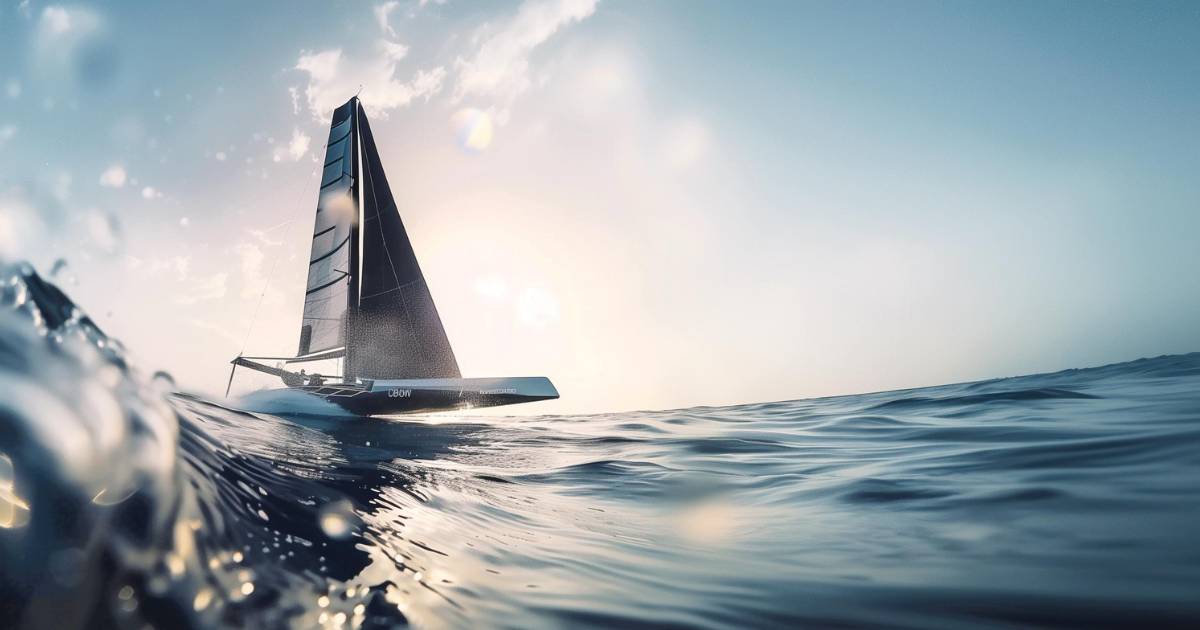
With a deep transformation on the horizon, recreational boating is being guided by sustainability and changing uses. Gianguido Girotti, Group Deputy CEO, and Eric Levet, naval architect with Marc Lombard Yacht Design Group, share their visions for tomorrow’s boat. Will they be easier to sail? Smarter and more autonomous? How will the spaces on board and the way boats are used evolve? Here, they share their insights looking ahead to 2050…
What will boats look like in 2050?
GGG: Twenty-five years from now, we’ll be able to communicate with our boats. They’ll interact with us in one way or another, proposing a program to suit our desires of the day! I think we’re entering a new era. An era in which AI (Artificial Intelligence) will further amplify the ability to make boats easier to use, safer and faster, allowing us to focus on the onboard experience and the pleasure of sailing! Over the past fifty years, the drive for safety and technology has been enormous. And it won’t stop – quite the contrary.
Within the Group, intelligent navigation is already a reality with SEANAPPS: we safely collect and analyze thousands of pieces of data from our 8,000 connected boats via this application. This enables us to better understand our customers’ usage and habits, so we can better respond to their needs. Our way of thinking and analyzing all this information is becoming increasingly precise and qualitative. For tomorrow, proximity and the ability to adapt to our customers will be essential. That’s why we’re investing in Boating Solutions, to go one step further with our customers in optimizing their dreams and personalizing their needs. This is a key transformation for the future of yachting.
EL: At the firm, we believe that in twenty-five years’ time, pleasure yachts will continue to look like they do today. They will still have flexible sails and aluminum masts to move around, transforming the wind’s natural energy into propulsion. Sails will be more easily recyclable. Sailboats will still have an auxiliary engine for port maneuvers and windless sailing conditions. But it will increasingly be electric. Mileage range will be improved with higher-capacity batteries. And these batteries will be recharged from several sources: solar, hydro-generation and wind power (as is the case with racing yachts).
We also believe that the yachts of 2050 will be even easier to use, more stable and with more comfort and living space both inside and on deck. The pleasure of steering and sailing will be even greater, and performance under sail will be on a par with that of previous generations. Pleasure motorboats will also evolve towards hybrid propulsion (thermal and electric), to limit pollution (noise and exhaust fumes) in harbors and anchorages. Their cruising speed will probably be lower in the future, to maintain sufficient autonomy.
On the other hand, their comfort will always be greater, both at sea and at anchor. For even greater comfort, stability will be enhanced by passive solutions that dampen mooring movements. For fast boats equipped with outboard motors, such as the FOUR WINNS TH 36, auxiliary foils will be a very interesting way to gain both sailing comfort and performance.

How will the ways boats are used evolve?
GGG: Sailing will be fast and flying, as will dayboating. Cruising, on the other hand, will be slower, seeking comfort and stability while reducing carbon emissions. Take foiling, for example. This is the new approach to dinghy sailing, for the America’s Cup and offshore sailing. This practice will evolve towards series production, as the new generations will all have experienced it. Foiling” also means very low thrust resistance, and therefore low carbon emissions. This will be another major revolution in yachting. In this respect, we have taken our first steps in the Group with the FOUR WINNS TH 36. With the addition of the foil, this boat will reduce fuel consumption by 20% when in use, and its behavior at sea will be considerably improved. This will revolutionize the sailing experience.
Another more recent development is our investment in Candela in 2024, and its cutting-edge Dynamic Foiling technology, which reduces carbon emissions by 80% during use and offers a full flight mode. I see Candela more as a cutting-edge technology company that could help us develop different solutions around improving sailing comfort in a sustainable way, not just for powerboats.
EL: Changing practices and customs (long-distance travel, summer cruising projects, more sedentary floating homes) will push us to optimize the services we provide. And then there’s the crucial question of reducing our impact (mainly CO2). Whether related to boat construction, use, maintenance, conversion or end-of-life dismantling. These issues are already driving the evolution of today’s boats. They will influence their design even more in 25 years’ time.
For years now, Groupe Beneteau has been carrying out research and development work that will benefit the boats of the future. The advances it has made in deploying new, more sustainable materials, such as natural hemp fiber or biosourced resin, are major. Not forgetting the use of Elium® resin, which looks very promising after trials on small boats such as the First 44, the Mini 6.50 and the Sun Fast 30 One Design.
Energy autonomy at anchor, with all the necessary comforts (hot water, refrigerators, etc.), will be essential to limit CO2 emissions. The concepts of energy reduction and electrical power limitation will be at the heart of the technical installations of the boats of the future, to limit their impact. The notion of “electrical load shedding” (optimizing the use of on-board electrical sources) will be an important part of the sailor’s culture of “good use and good practice”. Users will need to be taught that they can “do a lot with less” by not running everything at the same time, and thus achieve greater autonomy with less impact. Equipment dedicated to resource management will know how to manage and optimize autonomy intelligently. In twenty-five years’ time, these concepts will be very much in evidence in the boating practices of the younger generations and future sailors.

What would be your ideal boat for the future?
GGG: For me, it’s a monohull sailboat capable of delivering both performance and sailing pleasure, while being equipped with technologies that constantly improve onboard comfort. Both at anchor and underway.
EL: My ideal boat is multi-faceted! If it’s a sailboat: it will be lightly equipped, well covered, very pleasant to helm and comfortable enough to live on for several days and nights. It could be a Sun Odyssey or a 35-foot Oceanis of the future!
And if it’s a motorboat, it would be a “cabin boat”, very sober in energy, discreet in aesthetics, and very comfortable at anchor. A sort of exploration boat, to slow down and contemplate the beauty of the coastline with minimum impact.

Gianguido Girotti
Group Deputy Chief Executive Officer and Boat Division Chief Executive Officer

Eric Levet
Naval architect at Marc Lombard Yacht Design Group